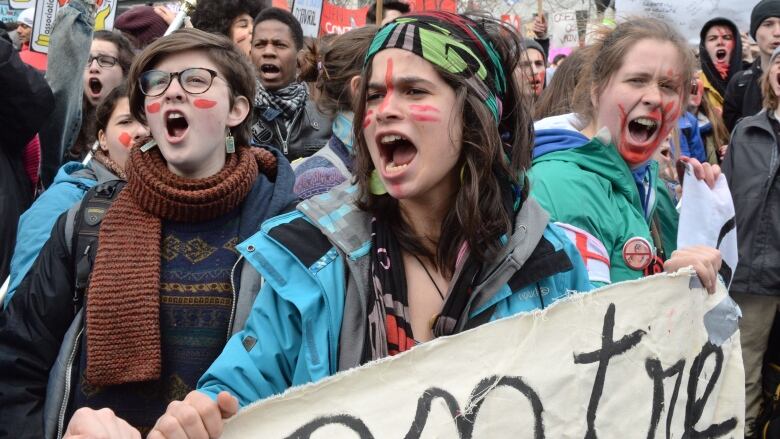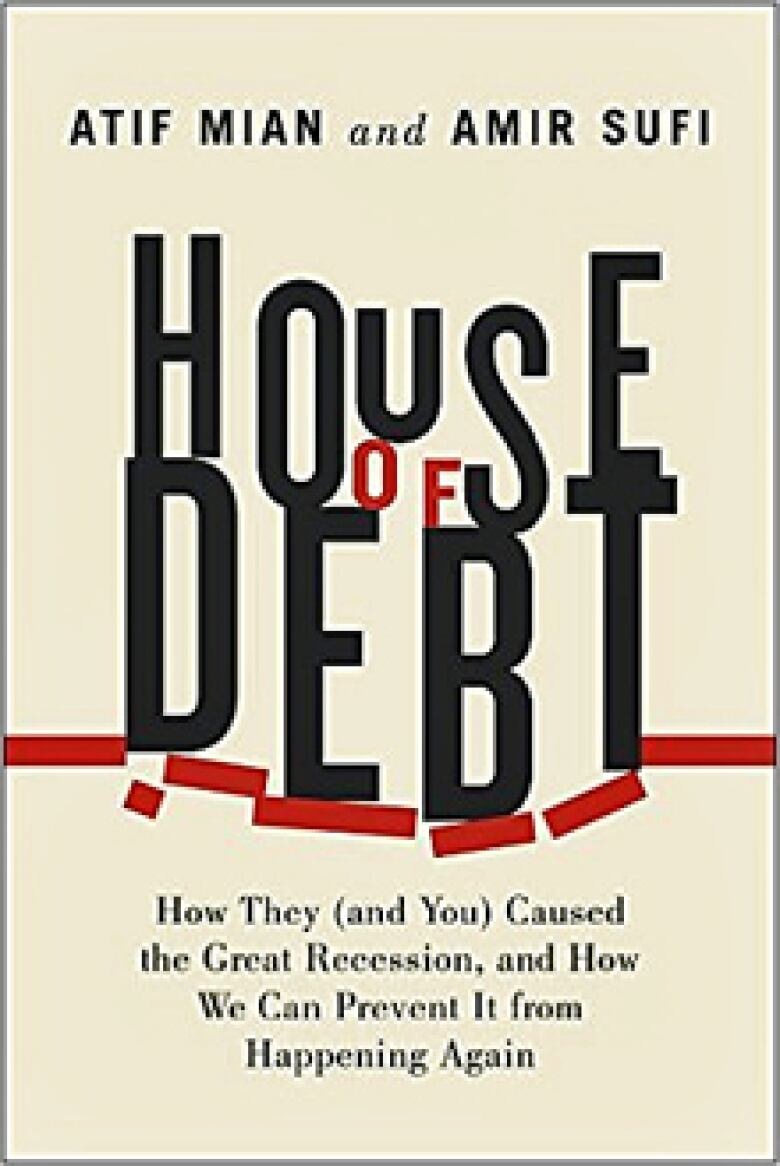Back to school 2015: Why student debt could be an issue in federal, U.S. elections
The economics and politics of student loans and grants

Post-secondary students in Newfoundland and Labrador won't get any student loans from the provincial government this year. They'll get grants instead.
About 7,000 students should be eligible for the grants in 2015-16. The province began replacing loans with needs-based grants to students in 2007.
Thatgrants-only program will cost $12.5 million per year.
It's a direction the Canadian Federation of Students would like to see other provinces and the federal government follow. About 60 per cent of a student's government loan assistance comes from the feds. And the CFS wants to make student debt an election issue.
In Newfoundland and Labrador, tuition fees have been frozen since 2003-04, and also in Alberta starting this year,but in the rest of Canada, tuition increases have been exceeding the inflation rate for years.
According to numbers released by Statistics Canada on Wednesday, the average undergraduate tuition in Canada this school year is $6,191, 3.2 per cent higher than last year.
That leavesthe average student who borrows money expecting to graduate with about $27,000 in debt, according to the 2015 Graduating Student Survey by the Canadian University Survey Consortium.
10 years to pay off federal debts
The Canada Student Loan Program says most students take about 10 years to pay off their federal debt.
Up-to-date federal government numbers are hard to come by, so these numbers are from 2012-13. That year, the CSLP handed out $2.6 billion in loans to 472,000 full-time students, six per cent more students than the year before.
There are about 1.5 million full-time post-secondary students in Canada. (Quebec, Nunavut and the Northwest Territories do not participate in the CSLP.)

According to the federal program, the vast majority of students do repay their loans, fully and on time. The default rate in 2012-13 was about half the rate of a decade earlier.
The feds write off about $300 million in student debt each year, with the total outstanding about $16 billion. In 2012-13, about 162,000 borrowers had their student debts written off by the federal government, mainly because the borrowers couldn't be located and the six-year legal limitation on collection had passed, according to federal documents obtained by The Canadian Press.
CP also reports that since then, the government has stepped up its collection efforts, resulting in a 4.5 per cent increase in 2013-14, compared to the year before.
Students' private debt increasing
Of course, the CSLP isn't the only source for student loans. Areas of concern include increasing private debtand the number of graduates with large debt.
While the amount owed to the federal government has been relatively stable, the amount of private debt (owed to financial institutions, family and friends, and on credit cards) has increased significantly, especially for doctoral graduates. Their private loan debt went from about $19,000 in 2005 to $40,000 in 2010, a 112 per cent increase.
The latest government stats are only from 2010 and they show the number of students with overall debts of $25,000 or more had increased significantly over the previous decade.

The overall financial picture for higher education has shifted over the past generation in a number of ways. Tuition makes up a much larger share of university revenue, over three times larger on average. The University of Toronto collects more in tuition fees than it receives in government grants.
More students are working, According to the CUSC survey, 59 per cent of graduating students do so, and average about 18 hours per week.
And the number of people aged 25 to 29 living in the parental home more than doubled between 1981 and 2011, according to Canadian census figures.
Young people were hit hard by the 2008 financial crisis, and Ontario numbersshow incomes for new graduates have yet to recover. Six months after graduating in 2012, their incomes were seven per cent less than when students graduated in the class of 2005. And two years after graduation, their incomes were 14 per cent lower than they had been for the class of 2005.
Only one of the 25 fields tracked, computer science, increased in real terms compared to 2005.
Getting the candidates talking

CFS national chairpersonBilan Arte says her generation is "one of the most indebted generations in Canadian history."
And the CFS is trying to get the candidates and the voters talking about the issue during the federal election. Arte wants government to "switch the funding model from one that is very costly and ineffective to one that could be very efficient" by doing away with student loans, education tax credits and education savings plans and replacing them with up-frontgrants.
She says "we wouldn't have to spend a dime more," and a grants system would be more accessible for low-income families who, she says, aren't eligible for the education tax credits.
She wants Canadians to view education as a right, accessible to everyone, like health care.
As dire as she sees the student debt situation in Canada, Arte does say it's worse in the U.S. "It's a very cautionary example of where Canada may be headed if we continue to ignore this problem."
But she's pleased to see U.S. presidential candidates talking about the problems, and offering remedies.
U.S. student debt now $1.2 trillion
The U.S. numbers are staggering.

Total student debt has reached $1.2 trillion US, owed by 43.3 million Americans. That works out to an average of $27,000.
That's not comparable to the $27,000 that Canadian graduating students borrowers have to pay off, since the American number includes millions of Americans who have been trying to pay off their student debt since they graduated decades ago. However, only 37 per cent of U.S. loan borrowers are making regular payments.
Student loan balances owing have tripled since 2004. The U.S. class of 2015 graduated with a higher student loan debt than any previous class, as the cost of a college education continues to grow sharply, according to theFederal Reserve Bank of New York.
At the start of the Great Recession, student loans were the smallest form of household debt in the U.S.Now they arethe second largest category, after mortgages.
Impact on the economy
"The growth in student debt, with its monthly cost and high delinquency and default rate, seems to be reducing both household formation and home ownership," the NY Fed says.
High student debt causes a drag on home buying and consumer spending, economist Amir Sufi tells CBC News.
"The evidence is pretty compelling that people who have a lot of student debt, who haven't been able to pay it down because the job market isn't great, they end up being less likely to be able to take out a car loan or a mortgage, which of course affects the economy," he says.
Sufi, the co-author ofHouse of Debt it's been called a landmark book teaches at the University of Chicago Booth School of Business.
He says the central problem with student loans is that they force graduates "to bear a disproportionate amount of risk for circumstances completely outside their control."
Four months after graduating, the unemployment rate for the class of 2009 was more than twice what it had been for the class of 2007. Sufi says the students who don't find employment right out of college have lower earnings even 20 to30 years afterward. And worse jobs.
Indexing student loans to employment rate

One step Sufi would like to see, and this could apply to Canada as well, would be indexing student loans to the unemployment rate for new graduates. That would reduce what he calls an unfair burden on students who graduate during economic downturns. Under this approach, the principal owing on student loans could be reduced if the student finishes college in a year when unemployment for graduates is above a benchmark rate.
The key difference between Sufi's proposal and the tied-to-income proposals by President Barack Obama and Democratic frontrunner Hillary Clinton is that Sufi's idea makes debt forgiveness contingent on how the economy performs, and their proposals make it contingent on individual outcomes.
"If you only give the debt forgiveness for people who take lower paying jobs, then people have an incentive to not take higher paying jobs," Sufi says.
While he's sympathetic to the idea of a grants-based system like the CFS favours, and that many countries, like Germany and Denmark have, Sufi says people who can afford it should pay for their post-secondary education. "There's a reason why the U.S. has the world's leading research universities and attracts the top talent when it comes to research and faculty," and that means tuition is higher.
The trade-off is that the U.S. also has the highest levels of student debt in the world.












_(720p).jpg)


 OFFICIAL HD MUSIC VIDEO.jpg)
.jpg)



























































































